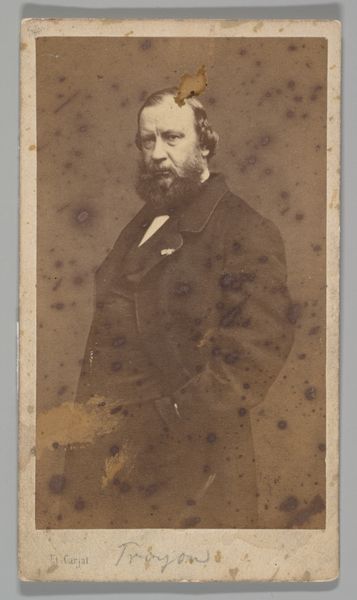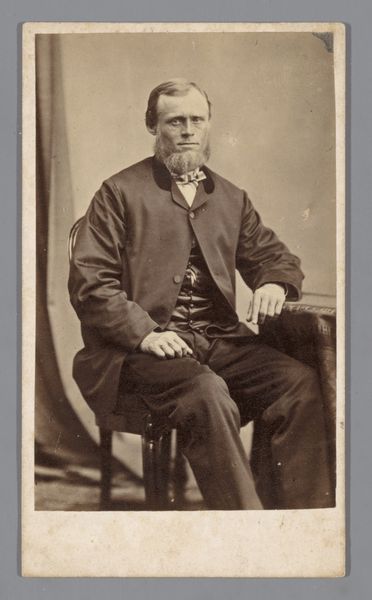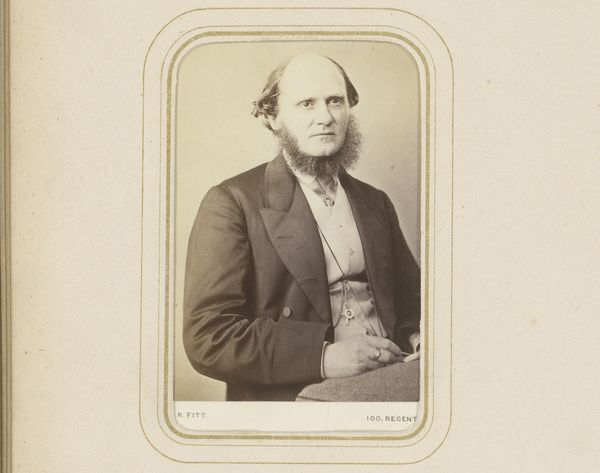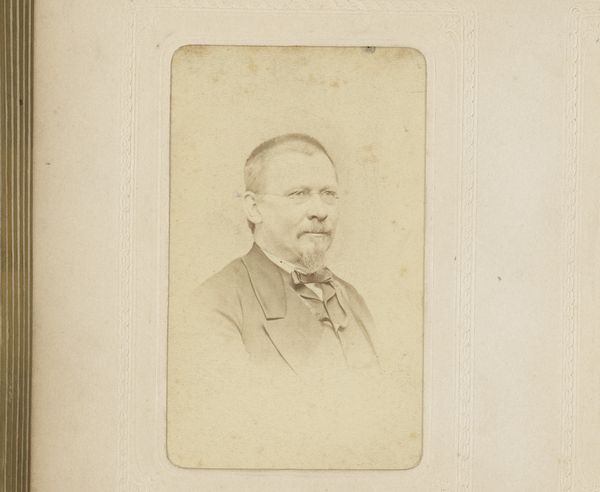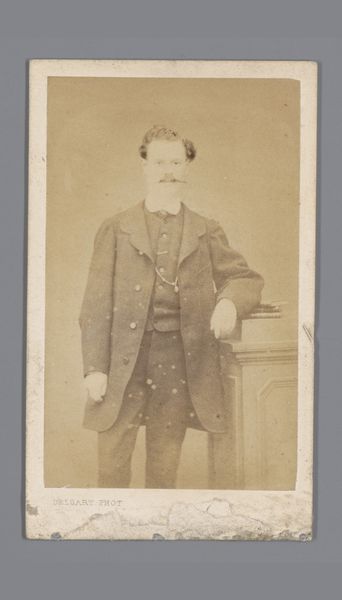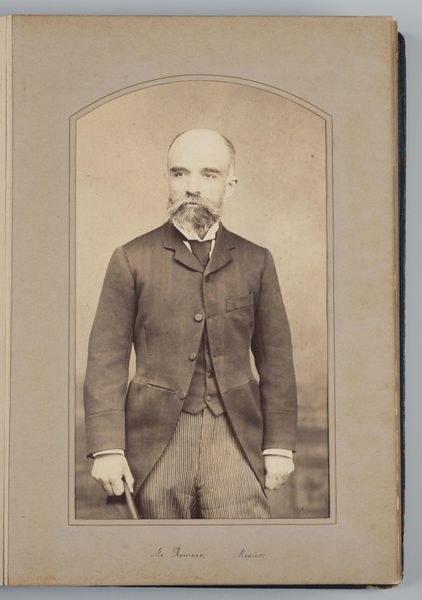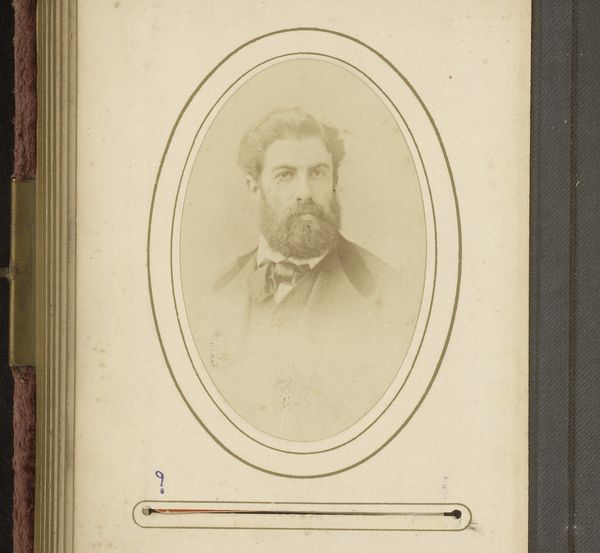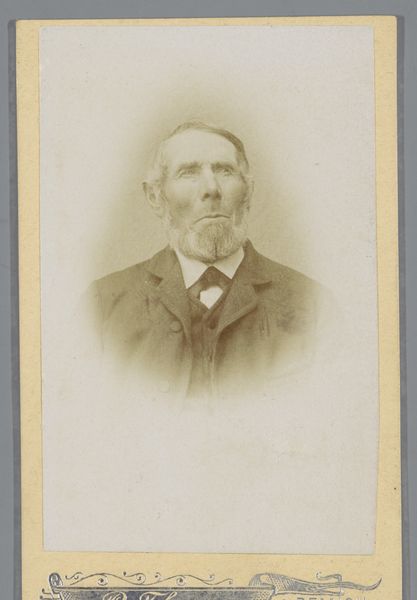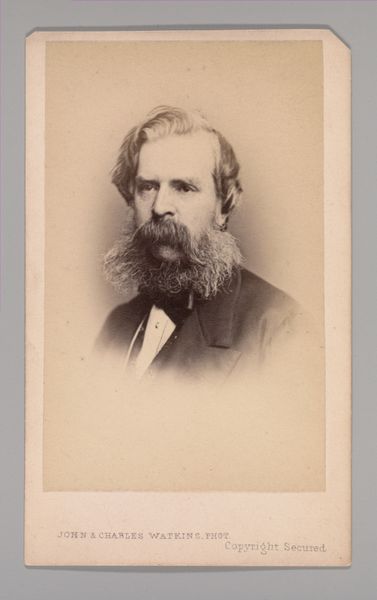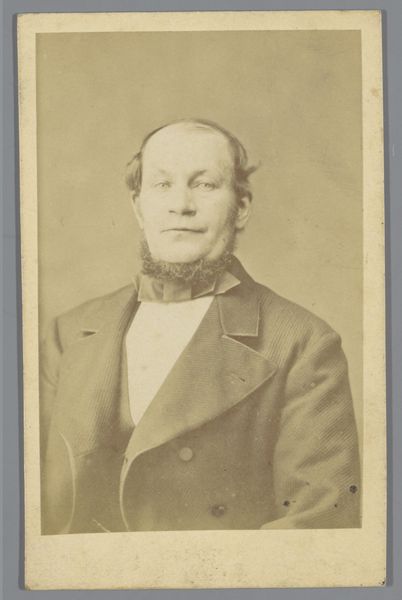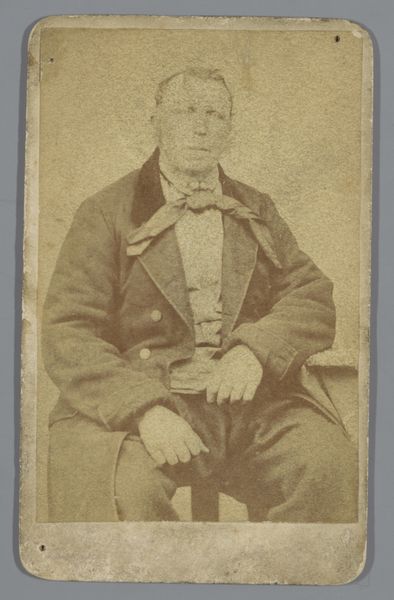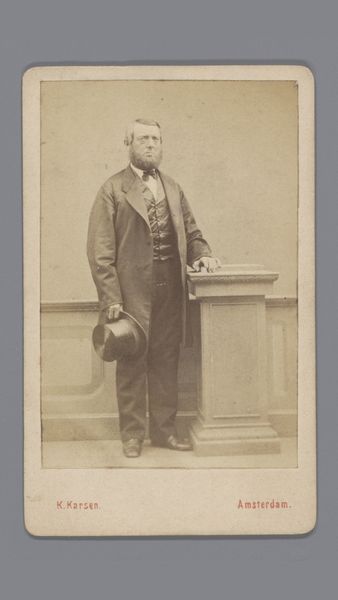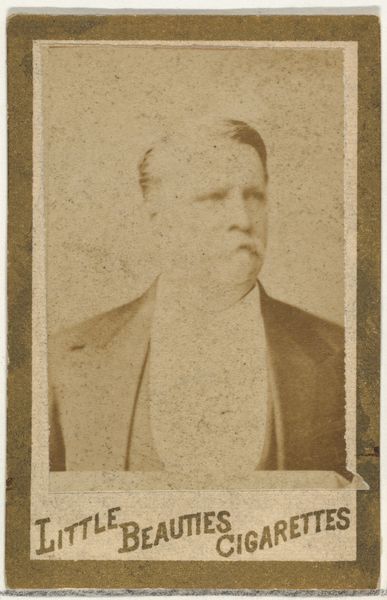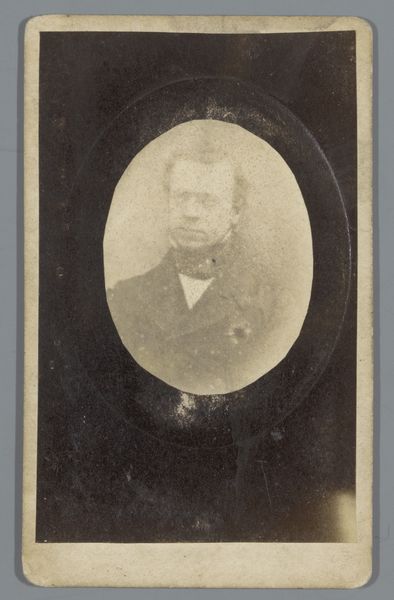
daguerreotype, photography, gelatin-silver-print
#
daguerreotype
#
photography
#
historical photography
#
historical fashion
#
gelatin-silver-print
#
realism
Dimensions: height 97 mm, width 58 mm, height 101 mm, width 62 mm
Copyright: Rijks Museum: Open Domain
Curator: Here we have a gelatin-silver print, dating back to approximately 1875, known as "Portret van onbekende man". Editor: The first thing that strikes me is how… staged it feels. Almost theatrical with that intense, direct gaze. Curator: Certainly, portrait photography in this era was about constructing an image of respectability and status, performing a very particular self. You see that reflected in his dark coat, tightly knotted bow tie, even the severe parting in his hair. There’s a rigid formality. Editor: And then there's that incredible facial hair! Those huge mutton chops – such a bold statement of masculinity in the Victorian era, practically framing his entire face. It gives a real sense of power and self-importance. It feels very symbolic. Curator: It absolutely is. That level of grooming wasn’t just about fashion, it was an active performance of class. His grooming underscores the societal power dynamics inherent in image making; think of Foucault’s theories of discipline. Editor: I see that now. What interests me about those chops specifically is the duality; it acts both as a statement of virility while masking half his face, creating a sense of hidden depths or even secrets. Curator: And that raises questions of what the photograph leaves unsaid; whose stories are absent? Who could afford to create these lasting images of themselves, and whose lives are excluded? How are these images actively building certain cultural and power hierarchies? Editor: Yes, and those early portrait photographs became instantly recognisable cultural shorthand for the virtues and aspirations of that social class, acting like modern-day avatars. What do you think we, the modern viewer, project onto it now, looking back? Curator: We're burdened with understanding its participation within larger histories of representation. But at the same time, by acknowledging its historical baggage, it offers us insights into how image functions socially and psychologically. Editor: Agreed, this photo and others of the time represent not just individuals, but a whole structure. It’s like a key into understanding the era itself.
Comments
No comments
Be the first to comment and join the conversation on the ultimate creative platform.
